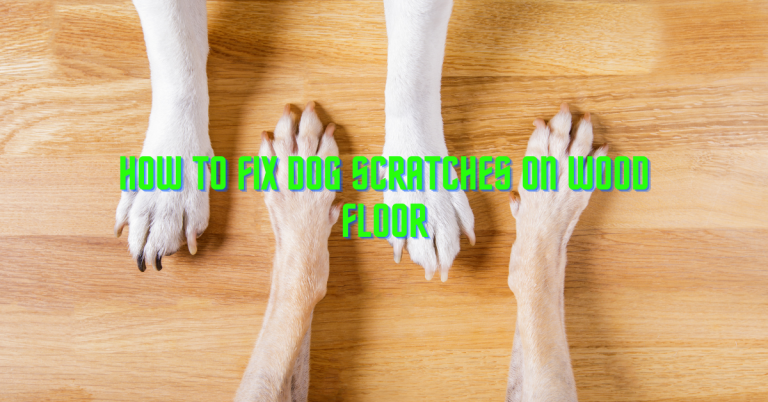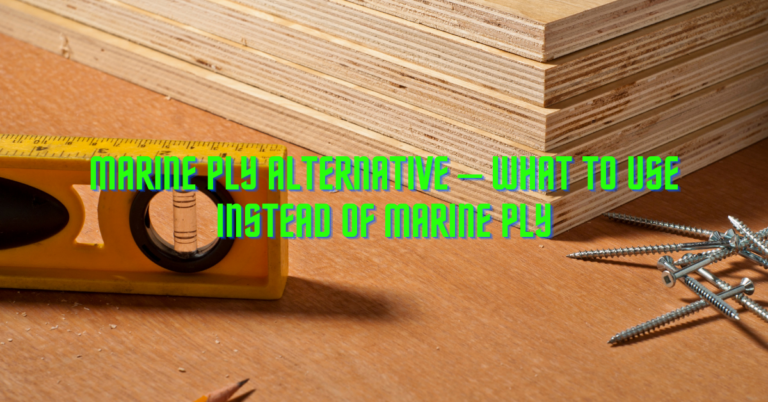How To Repair Water Damaged Wood Veneer
Wood veneers are generally less than 1/40” thin slices of natural wood. The thin, glossy layer of wood on veneer furniture is referred to as wood veneer. It is a common choice for homeowners who prefer a polished appearance.
Most homeowners use veneers to design structural panels for heavier hardwood timber products, which include plywood, particleboards, splaying, and Medium-density fibreboard.
If your wood veneer has been damaged by water, having the necessary information on how to approach such an issue is extremely important. So, the question is how to repair water damaged wood veneer?
In this article, we are going to address how you can repair wood veneer, the necessary materials needed to get the work done, and how to protect your wood veneer from water damage. Read on to learn this information.
All at a Glance
Can water damaged wood veneer be repaired?
Yes, the water-damaged wood veneer can be repaired. To repair water-damaged wood veneer may not necessarily require the services of a professional refinisher.
When observed early, the water damage only affects the surface. However, when caught late, water may have reached the finish and destroyed the furnace. With the right knowledge and patience, you can fix water-damaged wood veneer when realized early.
Is veneer real wood?
Veneer is real wood, but technology permit materials to be cut into thick plates without waste. It can be sawn quarter, rotate as thick boards, cut rift, or sawn plain, yielding various grain patterns for each cut.
Just like natural soft and hardwood veneers, wood veneers have been reengineered or fabricated but they are still natural wood cellulose fibers.
They are made of renewable and highly sustainable forests, frequently to be similar to exotic timbers, which are either scarce, expensive, or endangered.

How does wood veneer get damaged?
Water is not a friend to wood veneer so, when it comes in contact, there are possibilities of stains and discolorations.
When water makes contact with wood veneer, it most times penetrates the wood. This makes the wood swell resulting in the separation of the veneer from the wood itself.
This is why it is important to inspect and notice any signs of water damage early on. The wood veneer can still be fixed when the damage isn’t much.
Also Read: Top 5 Best finish for hardwood floors with dogs
Signs of water damage on wood veneer
Stains and discoloration
Stains and discoloration can happen to wood floors, furniture, and walls. These stains are always darker than their former color. Generally, the stains are dark brown, green, dark yellow, or orange.
The production of salt and minerals during water evaporation always leads to discolorations. White discolorations on wood furniture can also be visible when the finish reacts with water.
Mold growth
When there is the presence of mold anywhere on wood, there is sure excess moisture in that area. In case you notice mold in any wooden area of the house without any other water damage signs, it means the wood veneer is badly damaged.
Change in texture and shape
Water damage on walls may make them soft and discolored. For wooden floors, it may make it warp, sink, or sluggish. It will also make the floorboards start rising. Any disfigured characteristics observed that weren’t there before indicate damage caused by water.
In the case of wood furniture, swelling, sagging, and any other texture changes can take place. The glue that holds the furniture together may also be damaged.
How to repair water damaged wood veneer?
Inspect the damage
Inspecting how extreme or low the water damage is essential so you can how much task this is going to be. In case the wood veneer is seriously damaged, peeling, and lifting from the glue joint, it is necessary to replace the whole veneer’s surface.
This task will require a lot of time but it will allow you to restore the furniture or cabinets to their original look. If it is only minor damage, like blistering veneer or water rings, the procedure to fix this is simple and quick. We will still address these minor repairs.
Cleaning
If you notice mold and mildew during the inspection, cleaning is necessary. Mix two caps of bleach with half a water bucket. Add in three caps of mild soap and blend the mixture well. Apply this mixture to the furniture and use a scrub brush to scrub properly.
Now, rinse soap with water and repeat the steps when required. Then, leave the furniture to air-dry for some minutes.
Eradicate the stains
Mix wood furniture cleaner and a few drops of orange oil. Next, rub it on the stains with circular motions before the stain lifts. Alternatives include mayonnaise or salad oil dressing.
Sanding and stripping
If the stains prove stubborn, the option to consider includes sanding and stripping. Make sure to put on a dust mask to protect yourself before starting this step. Sand the furniture in the direction of the grain with a sander with 220-grit sandpaper.
Ensure to sand the areas eroded by water. Continue to sand the other part of the furniture to create a layer also. Then wipe away wood dust using a clean paintbrush.
Use the paintbrush to apply a chemical stripper to the wood. Give the oxidizing or bubbling chemical agent some time. You can then scrape the furniture board with a knife.
Gluing loose joints
Use 150-grit sandpaper to get rid of the old glue from damaged joints. Then, use a clean paintbrush to get rid of the wood dust. Now, place wood glue to join the loose joints again. Be sure the joint is in place and leave it to rest overnight.
Painting
Apply the first coat of latex enamel paint to your desired shade. Allow it to dry before applying the second coat.
Applying varnish
Refinishing wood veneers is essential to protect them from further damage. Then, you can use a waterproof and insect repellant varnish for this process. Apply the first coat of varnish to your wooden furniture. Wait for some time to allow the first coat dry before adding the second coat.
How to fix white spots
To fix white spots seen on veneer furniture, the materials you can choose from include denatured alcohol, liquid furniture polish, and cigarette ashes with oil. Any of these is effective in removing bothersome stains.
Apply a small amount of your desired material to remove the stain on a soft cloth. After, carefully rub the cloth on the surface of the white spot.
Be careful not to rub too harshly, you might strip some of the veneer’s finish off. Once the white spots have vanished, eradicate the stain remover with a clean cloth.
For stubborn spots, use a mixture of rottenstone and linseed oil. Rub the surface gently with a soft cloth. Wipe with a clean rag once the spot is gone.
Remember to put two layers of furniture wax on the surface. The wax will repolish the veneer and add a glossy shine.
How to fix blushing
Blushing requires more effort to remove compared to white spots. Use coarse grit sandpaper to gently sand over the affected surface while following the direction of the wood grain.
Continue until you confirm that the wood’s shade is back to normal. Then, wipe off the dust with a cloth. The next step is to hard wax the entire surface two times and polish the entire surface.
Another method to fix blushing is known as re-amalgamation. Use either denatured alcohol or lacquer thinner to dissolve the veneer finish. Rub the treated surface until the blushing goes away. Now, blend the edges with careful brush strokes. Allow it to dry before applying two layers of furniture wax.
How to fix black spots
Black spots on wood veneers indicate significant water damage. The best approach to this is to call the service of a professional. It is not easy to fix black spots on veneer furniture by yourself. Call a specialist or replace the veneer furniture.
If extreme water damage is caused by a hurricane or burst pipe, you may check with your insurance coverage to handle that.
How to protect wood veneer?
It is always preferable to protect wood veneer from water damage early on. To avoid water damage to wood veneer, you can use desk pads and coasters to protect your wood veneer. Some people choose to protect it by placing a glass top on their furniture. Overall, regular cleaning is essential
Conclusion: How To Repair Water Damaged Wood Veneer
Veneer furniture are good choices at home. There are several methods to repair the veneer making it look good as before. Whether your wood veneer experiences indoor flooding, pipe leakage, or comes in contact with water, you should be able to handle these different cases with the above guide.
If you follow all the tips we’ve shared with you, we are confident that you will be able to refinish the damaged veneer wood on your own. When it comes to extreme cases, do not hesitate to reach out to an experienced wood finisher.
Important Reads:







